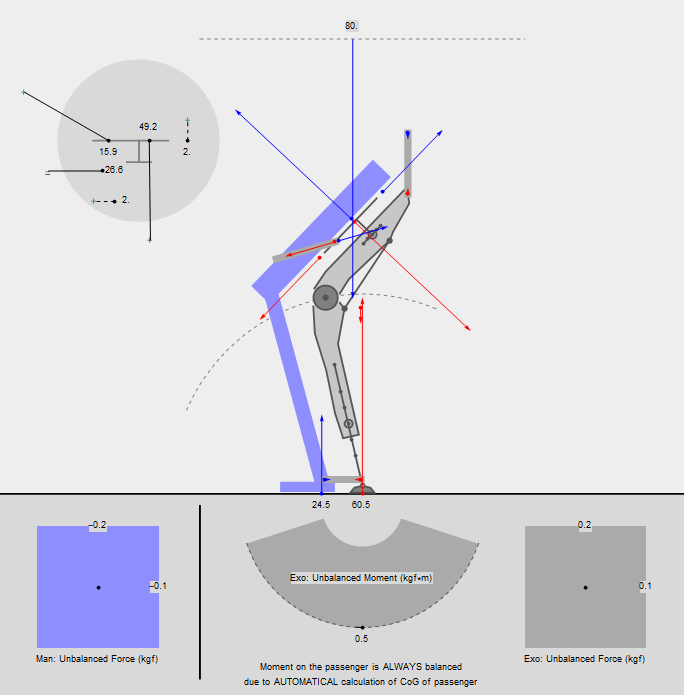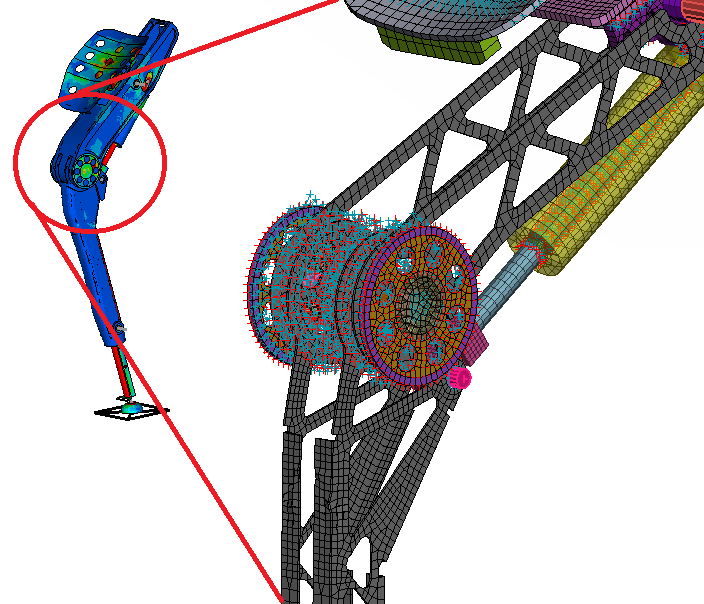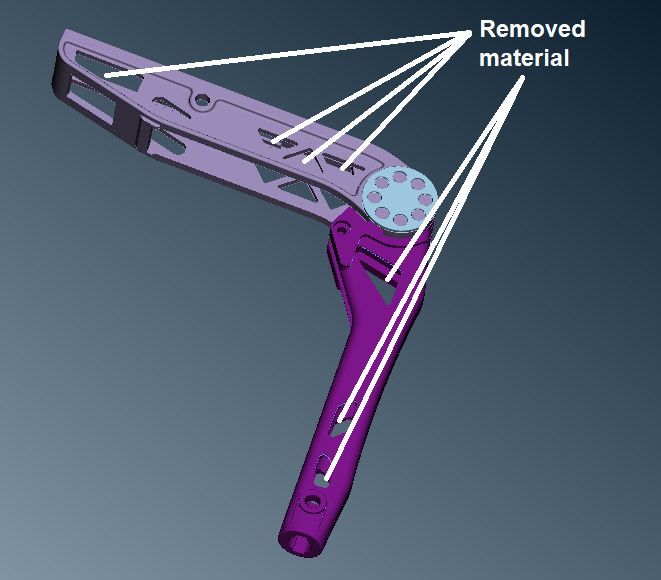Lower body exoskeleton ExoChair (version 2018)
Overall project description
Passive exoskeleton ExoChair is designed for unloading the back muscles when working in small spaces. “Operator” of the exoskeleton can stay at different depths of landing due to the work of power pneumatic cylinders.
Our company was tasked with:
- Perform stress analysis
- Perform weight optimization
Project site:
Balancing of applied forces
Intermediate task (before starting stress calculation) was to determine all forces acting on the exoskeleton.
To solve this, we created a program that balances all forces applied to the exoskeleton (weight, operator pressure, support reaction, belt tightening forces, friction forces, etc.). This program allows to determine the forces acting on the structure at any positions of the operator and power cylinders.
Finite element model
For the stress analysis we created a detailed finite element model that allows us to determine stresses in all key components of the structure.
The model takes into account:
- Contact interactions inside the knee joint
- Stress flow through power pneumatic cylinder
- Mobility of individual components
Structural optimization
After determining at the previous stage the most loaded areas of the structure, structural optimization was performed:
- Most dangerous areas were reinforced.
- The weight optimization was performed. Due to the change and removal of the material, the total mass of the structure was reduced from 4,600 to 4,000 grams (about 13%)




